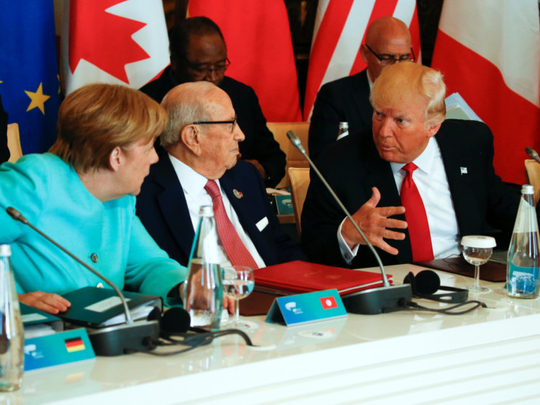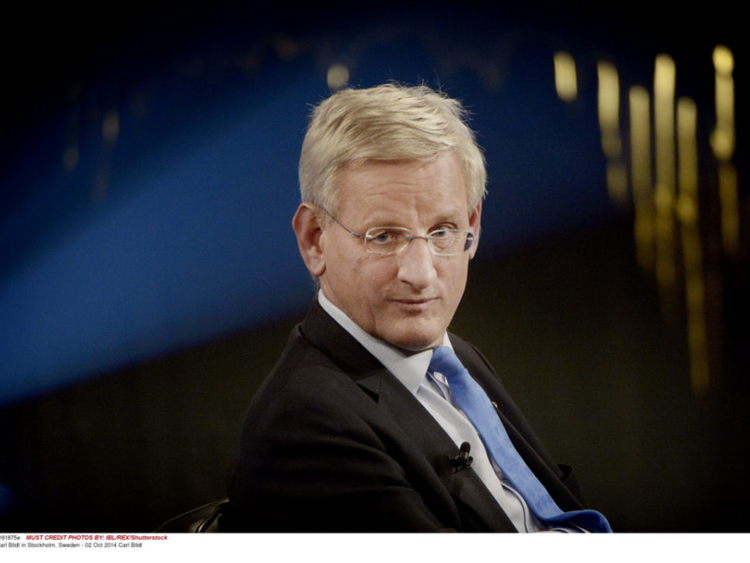
As Air Force One took off from Brussels and President Trump headed to the Group of Seven Summit in Sicily to fight new battles against the global consensus on trade and climate change, European leaders were as confused as ever over where his United States is heading. Previous months have seen one reassurance effort after the other. Vice-President Pence and Defence Secretary Jim Mattis have been clear in their efforts to explain that the United States remains a reliable partner and ally.
And European audiences have listened, nodded and said, fine. But it would be nice to hear those words from the man occupying the Oval Office. Expectations prior to him touching down in Brussels were distinctly low. Everything was geared to trying to ensure that no major accidents happened. Shorter meetings. Nice words. Certainly no media encounters. And there were good aspects. He turned up at the European Union’s headquarters — that had taken some time for previous occupants of his position. And he abstained from publicly declaring either Nato or the EU obsolete or wrong. By the standards of these days, this was perhaps even a small success. But beyond that it was all rather confused and slightly unsettling.
The one thing that was expected of his appearance with the other Nato leaders was an unequivocal commitment to the Article 5 mutual-defence clause that is the very core of the alliance. And it can’t be that he didn’t know that this was expected. He has a competent national security team that almost certainly had made that clear to him. That makes the failure to say what all previous US presidents since 1948 have said all the more remarkable.
Instead, Trump lambasted European leaders for not spending more on defence, claiming that they “owe” Nato “massive amounts of money” from past years. He should have noted that European defence spending is clearly on the increase, and that this has to do with territorial defence, with Russia and with Article 5. In short: European leaders take the core functions of Nato seriously. Perhaps more seriously than Trump does.
After Trump’s EU meetings, European Council President Donald Tusk bluntly noted that he wasn’t certain that he and Trump were on the same page concerning Russia. And the same evidently applied to the hardly-less-important issues of trade and climate change. If Russian President Vladimir Putin is really such a benevolent chap, and Article 5 not really worth endorsing, one wonders why we need all these extra billions of dollars for defence. There is a glaring and obvious inconsistency in the message Trump is delivering.
It’s certainly true that European defence spending was on a declining trajectory during the immediate post-Soviet decades, and it’s also true that the United States spends more than the European allies. But it’s equally true that US defence efforts in the Nato area were even more radically cut back during this period, with bases in Europe kept primarily as platforms for operations in other areas, and it’s certainly also true that US defence spending has been pivoting heavily to non-Nato areas.
The Trump administration is still on its “shakedown cruise,” with some considerable confusion on the bridge, obvious design inadequacies and with distinctly choppy waters. Asian leaders are still reeling over the abandonment of the Trans-Pacific Partnership trade deal. After this Brussels visit,— with uncertainties over trade, climate change and Article 5 — European leaders are also scratching their heads and wondering where this is heading.
Tusk was very explicit in his comments after his talk with Trump. The relationship must be based on “values and principles first... not just interests.” But there was — apart from fighting terrorism — obviously some confusion concerning both values and interests.
— Washington Post










